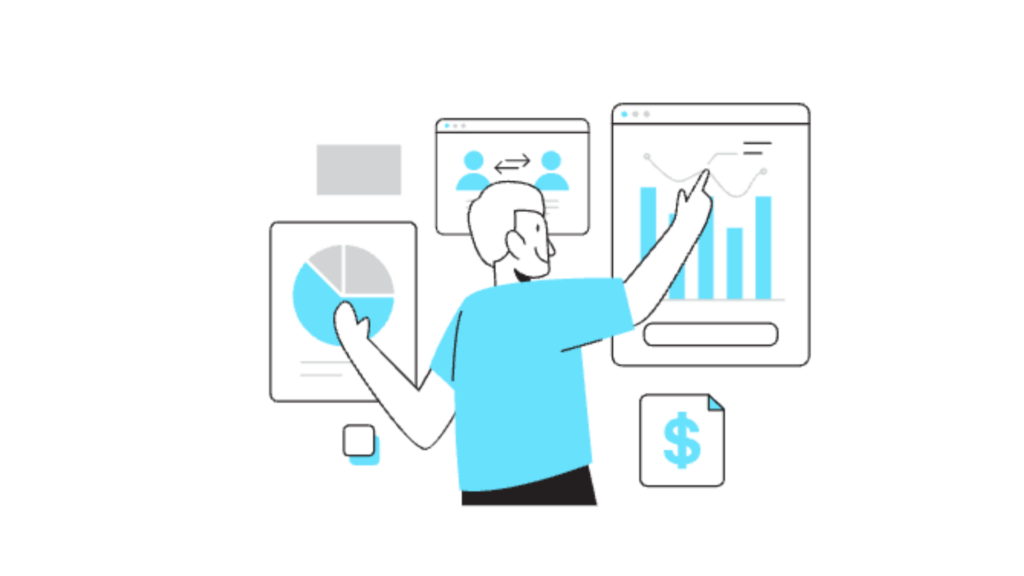11 CRO practices to help user experience

I recently wrote a post on the basics of conversion rate optimization (CRO). I thought it would be useful to follow up with some examples of how you can apply CRO to increase the results of your online marketing.
CRO is a process that you can apply to any marketing activity, it’s a way of thinking about marketing rather than a set of tools. So I’ve tried to think of some examples that will be useful to everyone, no matter what your industry or budget.
The basic idea behind CRO is to use evidence to make changes that will improve your results. The evidence you use can come from a number of sources, including web analytics data, usability studies and split testing.
The first step is to identify the problem with your marketing. Then you need to come up with a solution, which you can test using a split test. If the test shows the solution is better than the original, you can implement it and move on to the next problem.
Here are some examples of how you can use this approach to improve your marketing.
1. Optimize your call to action
Your call to action (CTA) is the most important part of your website. It tells your website visitors what you want them to do next.
Whether you want them to sign up for your email list, make a purchase, or contact you, your CTA should be clear and concise.
A good CTA should be short and to the point. It should also use action-oriented language that tells your website visitors exactly what you want them to do.
2. Use directional cues
When you visit a website, you want to know where to look. Websites can be busy, and you don’t want to spend a lot of time trying to figure out what you’re supposed to do.
That’s why it’s important to use directional cues. Directional cues are elements on your page that tell your visitors where to look and what to do.
For example, you can use arrows to point to your call to action. This helps draw attention to your CTA and increases the likelihood that your visitors will click on it.
You can also use images (which can be created with an AI image generator) of people looking at your CTA to help direct your visitors’ attention. Studies have shown that people are naturally drawn to other people’s eyes, so this can be a very effective way to use directional cues.
You can use directional cues to help improve the user experience on your website and increase your conversion rates.
3. Create a sense of urgency
One of the oldest tricks in the book is to create a sense of urgency. This gets people to act quickly and not put off what they can do today.The most common way to do this is to put a time limit on a sale or to offer a limited time coupon — both classic applications of the psychology of discounts.
The most common way to do this is to put a time limit on a sale or to offer a limited time coupon. For example, marketplace payment platforms can display countdown timers or limited-time payment discounts to drive faster decisions. But you can also use other techniques like showing low stock counts.
4. Limit choices
In a world where we have endless choices, a customer can become overwhelmed and choose to make no choice at all. This is a common occurrence in the world of e-commerce.
The problem with this is that you have a customer who is ready to make a purchase, but they can’t decide what to buy. This is where limiting choices can be a great way to help the customer make a decision.
You can limit choices in a number of ways. For example, you can use product filters to help customers narrow down their options. You can also use product recommendations to show customers products that are similar to what they are looking at.
By limiting choices, you can help customers make a decision and complete their purchase. This approach can even be adapted across different types of work environments, whether in a retail setting, a corporate team, or remote e-commerce operations, tailoring the user experience to the context at hand.
5. Make the most of your landing pages
Landing pages are the pages that users “land” on when they come to your website. They can be your home page, a specific product page, or a blog post.
The goal of a landing page is to get a user to take a specific action, like signing up for your email list, making a purchase, or reading more of your content.
To make sure your landing pages are effective, you need to optimize them for conversions.
That means making sure the page is easy to read, has a clear call to action, and is relevant to the user. Clean visuals matter too; using tools to remove background from header images or illustrations can help you maintain visual focus and avoid clutter that distracts from your core message.
6. Create an attention-grabbing headline
The headline of your webpage is the first thing users see when they land on your site. The headline is the first thing users read and the first thing that can help you convert them.
If your headline is boring, uninformative, or too long, it can turn users off and make them leave. Use your headline to grab users’ attention and tell them what your site is about.
You can also use your headline to tell users why they should choose your business over your competitors. This is called a value proposition, and it’s a great way to improve user experience and increase conversions. Ensuring fast loading times through site speed optimization can further support your headline’s impact by keeping users engaged from the start.
7. Show off your product
When it comes to e-commerce, one of the most important things you can do is show off your products. This is especially important when selling electronics online, where detailed visuals and specifications can make or break a purchase decision.
This means high-quality photos, infographics, video demos and more. The more you can show off your product, the more likely people are to buy it.
In fact, 93% of consumers say that the visual appearance of a product is the most important factor when making a purchase.
So, make sure you’re showing off your products in the best possible light.
8. Use social proof
Social proof is a powerful tool that can help users feel more confident in their decision to convert. You can use social proof in a number of ways, such as by displaying customer testimonials, product reviews, or even just showing how many people have already converted.
For example, if you’re trying to get users to sign up for a free trial of your software, you could display a testimonial from a happy customer who had great success using your product.
Or, if you’re trying to get users to sign up for your email list, you could display a pop-up that shows how many people have already signed up.
Social proof is a great way to build trust and credibility, and it can help you increase your conversion rates.
9. Keep forms simple
Forms are a great way to collect data from your users, but they can also be a major source of friction if they’re too long or complicated. Try to keep your forms as simple as possible, and only ask for the information you absolutely need. For example, if your site allows users to search for personal information like a public records lookup you don’t need to ask for more than a name or state to get started. Minimizing the number of fields keeps the experience fast and user-friendly.
You can also make your forms more user-friendly by breaking them up into smaller sections and using conditional logic to show and hide fields based on the user’s previous responses. This can help to make your forms feel less overwhelming and time-consuming. To further optimize performance, implement form tracking to monitor how users interact with each field. This allows you to spot where users drop off or hesitate, so you can make data-backed improvements that increase conversions.
10. Make sure your site is mobile-friendly
In today’s digital age, it’s no longer acceptable to only have a desktop-friendly website. With the majority of web traffic coming from mobile devices, it’s crucial that your website is mobile-friendly.
If your site isn’t mobile-friendly, it can lead to a poor user experience and cause visitors to leave your site. Not to mention, it can also hurt your search engine rankings, as Google now uses mobile-friendliness as a ranking factor.
Make sure your site is mobile-friendly by using a responsive design, which automatically adjusts your website’s layout and content based on the user’s screen size. You can also use Google’s Mobile-Friendly Test to check if your site is mobile-friendly.
11. Test
Testing is a key component of conversion rate optimization. There are many different things you can test on your site to improve conversion rates, but these are some of the most common and easiest to implement:
• Test your call to action: Try different colors, wording, and placement to determine what works best.
• Test your images: Try images of people using your product or service, versus more general images.
• Test your value proposition: If you have a high bounce rate or a low conversion rate, consider testing your value proposition.
Testing is the best way to find out what your customers want and need. You can test almost anything on your website, from the color of your call-to-action buttons to the length of your product descriptions.
A/B testing is the most common form of testing. It involves creating two (or more) versions of a page and then sending a portion of your traffic to each version. You can then see which version performs best.
You can also test different elements of your website in isolation. For example, you could test the headline of your landing page without changing anything else.
There are lots of tools available to help you run tests on your website. Some of the most popular include Google Optimize, VWO, and Optimizely.
Testing is an ongoing process, and you should be running tests on your website on a regular basis. Even small changes can have a big impact on your conversion rate and your bottom line.
If you’re not testing your ideas, how do you know if they’re any good? How do you know if they’re any better than what you have in place already? You don’t.
Testing is the only way to know whether changes you make to your website are going to be beneficial to the user experience or not. There are a few different types of tests you can run, the most popular being A/B tests and multivariate tests.
A/B tests are where you take your original page and create a variant of that page with one change, and then you split your traffic between the two pages to see which performs better. Multivariate tests are where you test two or more changes on a page.
If you’re not sure where to start with testing or don’t have the bandwidth to run ongoing experiments, a CRO agency can help. They specialize in structured A/B testing, know what to look for in user behavior, and can help you implement changes that lead to real results.
Conclusion
Conversion rate optimization is a crucial part of your business. It is the process of increasing the percentage of users who perform a desired action on your website. We hope this blog post has helped you understand how CRO works and how you can improve it for your business.


